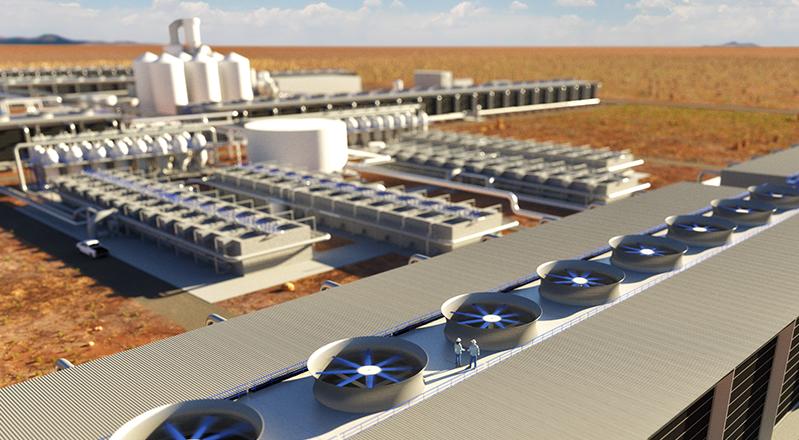Photo: 1PointFive
‘The Department of Energy continues its efforts to reduce the cost of direct air capture technology as well.’
The Department of Energy has recently awarded grants totaling $1.2 billion to two direct air capture (DAC) projects, with the aim of eliminating over 2 million metric tons of carbon dioxide from the atmosphere annually. According to the agency, this is equivalent to the emissions produced by approximately 445,000 gas-powered cars in a year. Alongside this significant environmental impact, the projects in Texas and Louisiana are expected to generate 4,800 well-paying jobs.
DAC employs a chemical process to separate CO2 from the air, which can then be stored underground or utilized in carbon-containing products like concrete, preventing the gas from being released back into the atmosphere. These projects represent the first commercial-scale DAC initiatives in the United States and are estimated to extract over 250 times more CO2 from the atmosphere compared to the current largest DAC location.
The Texas facility is being constructed by 1PointFive, a subsidiary of Occidental Petroleum, in collaboration with other partners. The CEO of 1PointFive has stated that once the project is fully operational, it has the potential to remove up to 30 million tons of CO2 annually.
These projects have been selected as part of the Regional Direct Air Capture Hubs program, which was funded by the Bipartisan Infrastructure Law. The program aims to mitigate the impact of climate change by establishing a network of large-scale carbon removal sites across the country that will complement other efforts to reduce emissions.
The DOE believes that DAC technology, once scaled up sufficiently, can aid the United States in achieving its goal of neutralizing emissions by 2050. However, as highlighted by Reuters, to have a substantial global impact, it is crucial to quickly reduce the associated costs of DAC. Achieving this will be pivotal to scaling up DAC to the level required, as demonstrated by the world’s largest carbon capture plant.
To address this issue, the DOE has announced various initiatives aimed at reducing the costs of DAC to below $100 per net metric ton of CO2 equivalent by the end of the 2020s. These initiatives include funding feasibility studies and engineering and design studies for projects in their early stages. Additionally, there is a $35 million government procurement program in place to support carbon removal credits.
In order to achieve the Biden administration’s objective of a net zero emissions economy by 2050, the DOE estimates that between 400 million and 1.8 billion metric tons of CO2 will need to be captured and removed from the atmosphere annually, originating from emissions sources.
